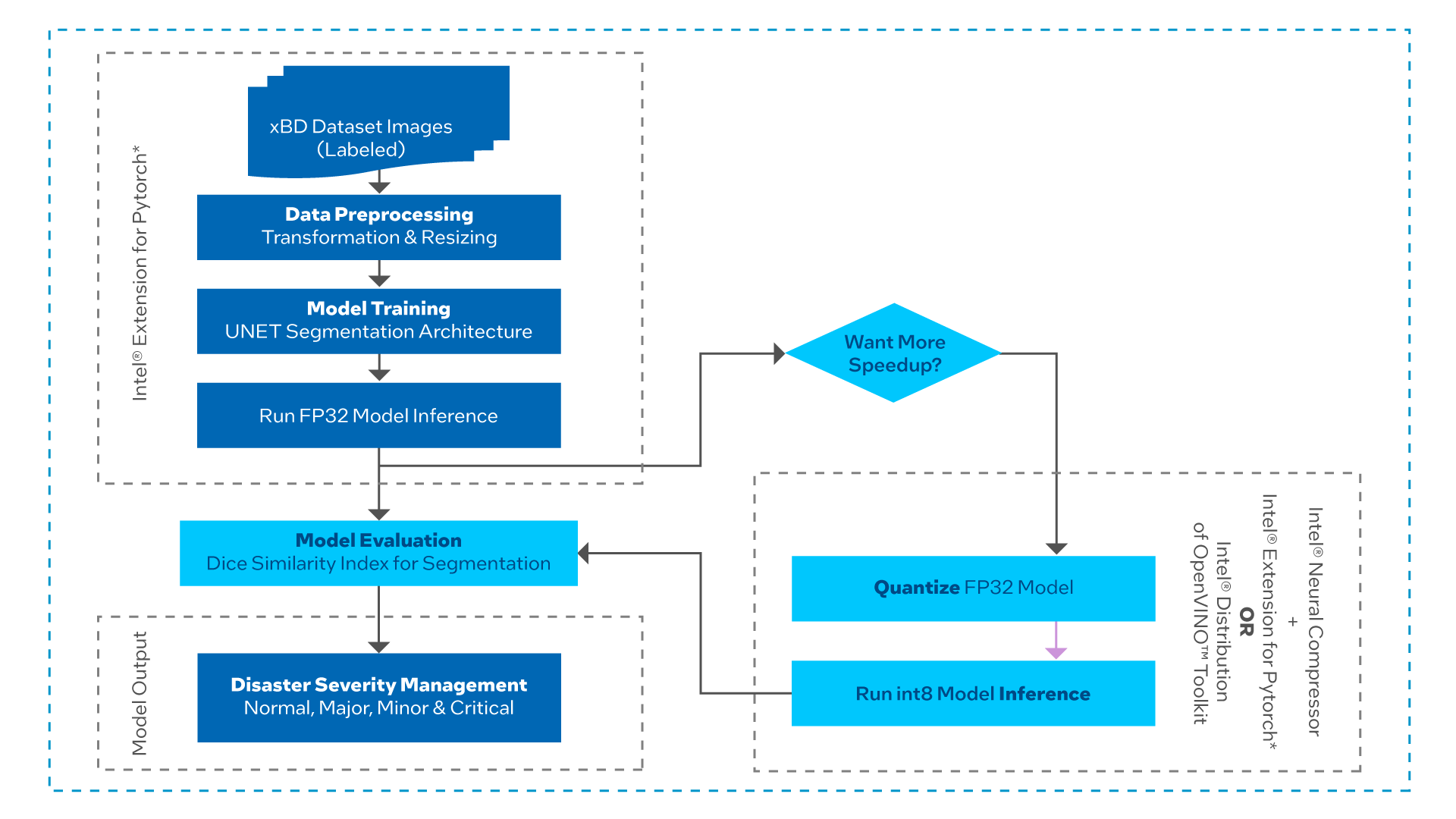Background
Traffic management often poses an issue for well-established and rapidly growing cities. To help avoid road accidents and improve traffic flow in cities, the use of intelligent traffic management systems that use video surveillance and automated accident prediction are critical. Deep learning and machine learning algorithms can predict traffic accidents based on live traffic camera feeds and warn vehicle drivers via device-to-device communication to help prevent accidents.
Cloud, edge computing, 5G, AI and deep learning, and IoT technologies form the core technology stack of intelligent traffic management systems. Internet protocol (IP) cameras and cloud-based communication between devices, although effective solutions for traffic management, introduce additional latency and bandwidth issues that can be detrimental in traffic management scenarios.
Solution
In collaboration with Accenture*, Intel developed a traffic camera object detection AI reference kit to help you create a general object detection model that is capable of distinguishing objects that would be relevant to traffic cameras.

End-to-End Flow Using Intel® AI Software Products
By taking advantage of the power of edge computing, communication between devices with very low latency can be achieved. A few example scenarios include:
- Traffic signals and vehicles exchanging information about pedestrians on crosswalks.
- Communication between surveillance cameras and vehicles regarding proximity
- Calculating the possibility of an accident with very low latency, which enables preventive action in near real-time
Deep learning algorithms can predict traffic accidents based on live traffic camera feeds. Computer vision tasks and complex feature analysis can be accomplished with high performance by leveraging deep learning algorithms. AI-based detection algorithms deployed at the edge enable real-time analytics of video feeds and detection of accidents and other issues, which improves overall traffic management.
Using PyTorch*-based YOLO* v5 convolutional neural network (CNN) architecture, the model detects vehicles and pedestrians on the traffic camera feed. OpenCV and NumPy-based postprocessing of Non-Maximum Suppression (NMS) and centroid-based distance calculation of detected objects are used to predict a possible collision, categorizing it into low risk or high risk.
This reference kit includes:
- Training data
- An open source, trained model
- Libraries
- User guides
- Intel® AI software products
At a Glance
- Industry: Government, cross-industry
- Tasks:
- Data preprocessing (normalization and resizing of the input images
- Centroid-based distance calculation of detected objects (vehicles and pedestrians) to predict a possible collision
- Alert vehicle drivers of possible high- or low-risk accident scenarios
- Quantize an FP32 model to int8
- Dataset: Pattern Analysis, Statistical Modeling, and Computational Learning (PASCAL) Visual Object Classes (VOC) images—live feeds from the traffic camera
- Type of Learning: Object-detection-based transfer learning
- Models: CNN-based YOLO v5 object detection model
- Output: Detected objects (vehicles and pedestrians) and alarms (high risk and low risk) for possible accident scenarios
- Intel AI Software Products:
- Intel® Extension for PyTorch* v1.13.0
- Intel® Neural Compressor
- Intel® Distribution of OpenVINO™ toolkit
Technology
Optimized with Intel AI Software Products for Better Performance:
The Traffic Camera Object Detection model was optimized with Intel Extension for PyTorch v1.13.0. Intel Neural Compressor was used to quantize the FP32 model to the int8 model. Intel Distribution of OpenVINO toolkit facilitates the optimization of a deep learning model from a framework, and deployment using an inference engine on computing platforms based on Intel hardware accelerators.
Intel Extension for PyTorch and Intel Neural Compressor allow you to reuse your model development code with minimal code changes for training and inferencing.
Performance benchmark tests were run on Microsoft Azure* Standard_D8_v5 using 3rd generation Intel® Xeon® processors to optimize the solution.
Benefits
This AI reference kit demonstrates the implementation of a performance-optimized approach for developing an optimal instance image segmentation model. You can use it in satellite image processing to evaluate the satellite images for disaster severity assessment.
Machine learning developers may need to train models for a substantial number of datasets. The ability to accelerate training may allow them to train more frequently and achieve better accuracy. Faster inferencing speed may enable them to run prediction in real time as well as perform offline batch processing.
With Intel oneAPI components, little to no code change is required to attain the performance boost.
Additional Resources
